Are Nail Drills Good or Bad?
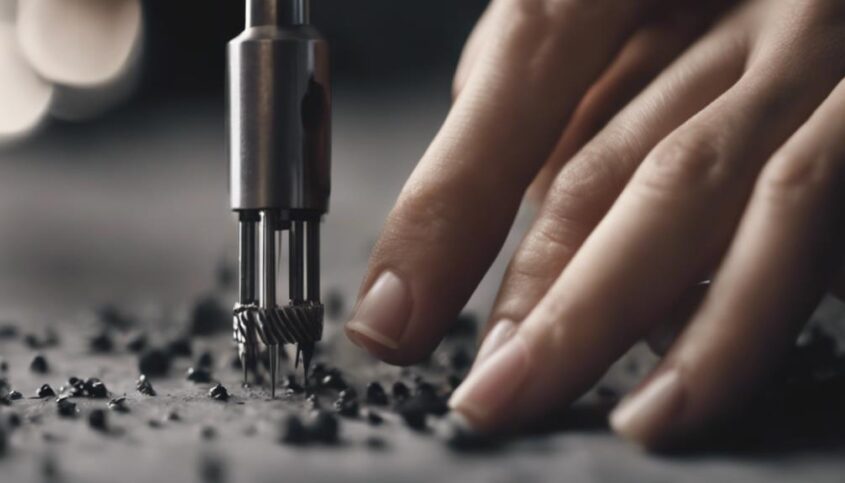
Nail drills offer benefits in shaping nails efficiently and creating intricate designs. However, risks include potential nail damage and infections if not used correctly. Understanding different types—rotary versus electric—and prioritizing safety features is crucial. High-speed drills are ideal for precision, while lower speeds suit delicate tasks. Proper technique, maintenance, and safety precautions are essential for safe usage. Regular cleaning, maintenance, and seeking guidance from professionals are recommended. Debunking misconceptions helps grasp the benefits of nail drills. Learn more about safe usage, maintenance, and expert recommendations for nail drills to maximize their effectiveness in nail care.
Key Takeaways
- Nail drills are good when used correctly by trained professionals.
- Properly maintained drills can enhance nail care efficiency.
- Using drills on natural nails with care is beneficial.
- Pain should not be experienced with gentle drill usage.
- Debunk myths to understand the benefits of nail drills.
Benefits of Nail Drills
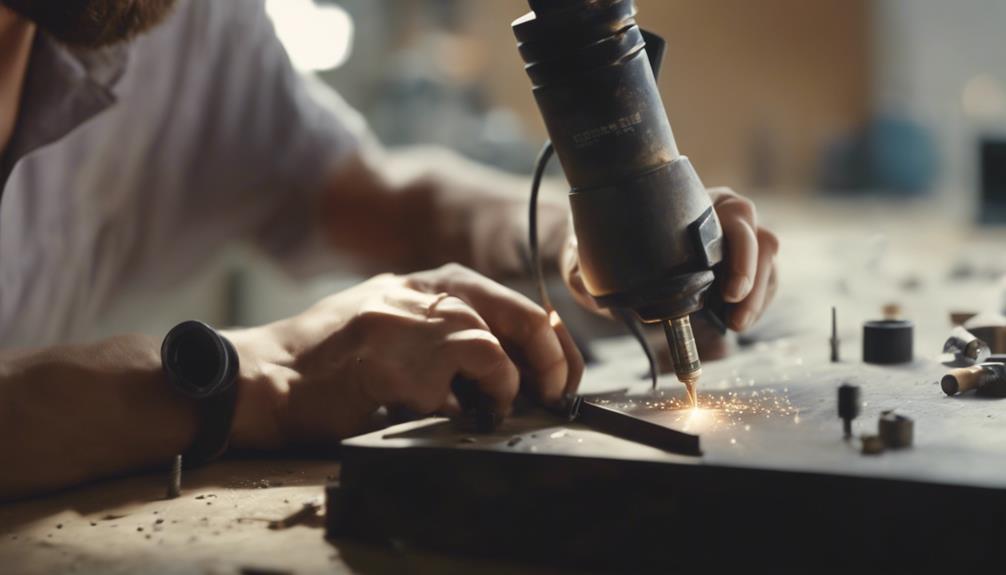
Nail drills are commonly used in professional nail salons to efficiently and precisely shape and buff nails, enhancing the overall appearance of manicures and pedicures. These tools offer a myriad of benefits that appeal to both nail technicians and clients seeking a polished and long-lasting finish. One key advantage of nail drills is their ability to save time during nail preparation and shaping processes. By swiftly removing excess length and rough edges, nail drills streamline the overall service, allowing technicians to cater to more clients efficiently. Furthermore, nail drills enable technicians to create intricate nail designs with intricate details that would be challenging to achieve by hand alone. This precision contributes to the overall quality and creativity of the manicures and pedicures offered. Additionally, nail drills can be instrumental in maintaining the health of nails by gently removing dead cuticles and calluses, promoting healthier nail growth. Overall, the innovative capabilities of nail drills play a crucial role in elevating the standard of nail care in professional salons.
Risks Associated With Nail Drills
Despite the benefits that nail drills offer in enhancing the efficiency and quality of manicures and pedicures, it is essential to acknowledge the potential risks associated with their use in professional nail salons. One of the primary risks is the potential for nail damage if the drill is not used correctly. Improper handling or excessive pressure can lead to thinning of the nails, weakening them over time. Additionally, using the drill on the natural nail bed can increase the risk of infections if the equipment is not properly sanitized between clients. Another significant risk is the potential for skin irritation or even burns if the drill comes into contact with the surrounding skin. Furthermore, overzealous use of nail drills can result in pain and discomfort for the client, impacting their overall salon experience. To mitigate these risks, proper training for nail technicians on drill usage, regular maintenance and cleaning of the equipment, and ensuring clients are informed about the process are crucial steps toward maintaining a safe and innovative nail salon environment.
Types of Nail Drills
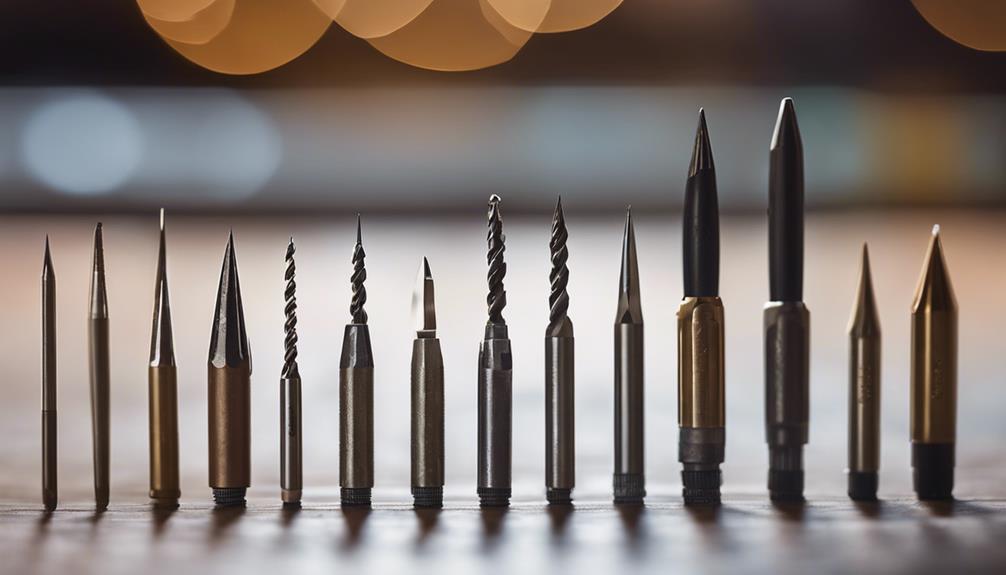
When considering nail drills, it is essential to compare the merits of rotary versus electric drills in terms of speed and power. Additionally, understanding the safety features of nail drills is crucial for both professionals and at-home users to prevent accidents or injuries. These key points will help users make informed decisions when selecting the most suitable nail drill for their needs.
Rotary Vs. Electric
In the realm of nail drills, the choice between rotary and electric types presents a crucial decision for professionals and enthusiasts alike. When considering rotary vs. electric nail drills, it's essential to weigh the following factors:
- Precision: Electric drills offer more control for intricate designs.
- Portability: Rotary drills are typically lighter and more portable.
- Durability: Electric drills tend to have a longer lifespan with consistent performance.
- Versatility: Rotary drills may be more versatile in handling various nail tasks efficiently.
Both types have their strengths, so choosing the right one depends on individual preferences and specific nail care needs.
Speed and Power
Nail drills vary in speed and power, influencing their efficiency and performance in various nail care tasks. High-speed nail drills are ideal for professionals seeking precision and quick results, while lower speeds are more suitable for delicate tasks or home use. Power is another critical factor to consider, as it determines the drill's ability to handle different nail types and thickness. Opting for a nail drill with adjustable speed and power settings provides versatility for a range of nail treatments, from shaping and filing to removing gel polish or acrylics. By choosing a nail drill with the right speed and power capabilities, users can enhance their nail care routines and achieve professional-quality results with ease.
Safety Features
Safety features integrated into different types of nail drills play a crucial role in ensuring user protection and enhancing overall operational efficiency. When considering safety features in nail drills, users should look for:
- Automatic speed control mechanisms to prevent overheating and reduce the risk of accidental injuries.
- Overload protection features that automatically shut off the drill in case of excessive pressure to prevent damage to the device and ensure user safety.
- Ergonomically designed handles that provide a comfortable grip and reduce strain on the user's hand during extended use.
- Safety shields or barriers around the drill bits to prevent accidental contact with the rotating components, minimizing the risk of cuts or abrasions.
How to Safely Use Nail Drills
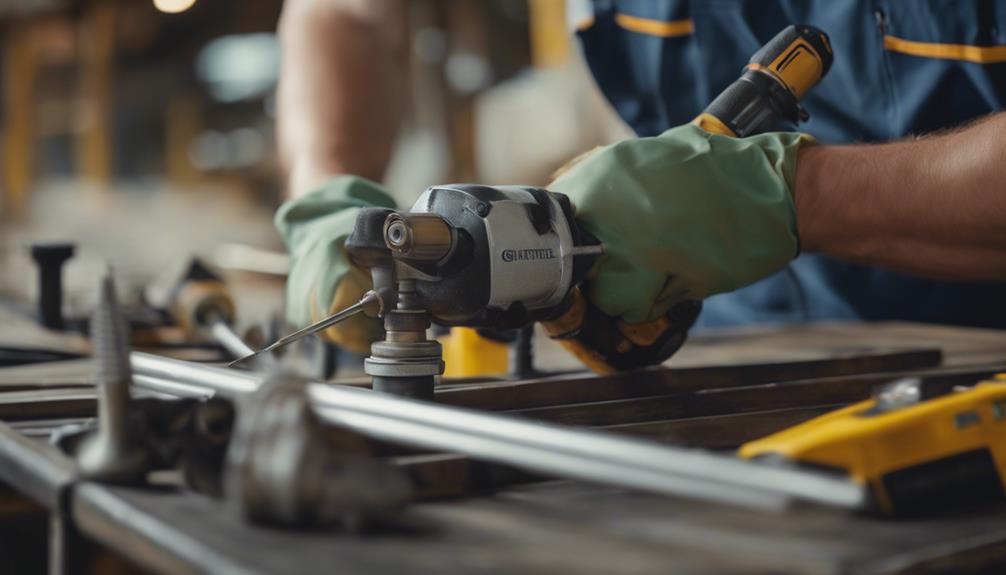
To ensure the safe and effective use of nail drills, it is crucial to master the proper drill technique, adhere to essential safety precautions, and prioritize the maintenance and care of the equipment. By understanding and implementing these key points, individuals can minimize the risk of accidents or damage while using nail drills, ultimately enhancing the quality of their nail care routines.
Proper Drill Technique
Utilizing appropriate hand positioning and applying gentle pressure are key elements in mastering the safe and effective use of nail drills. When using a nail drill, it is essential to follow proper techniques to prevent damage or injury. Here are some tips to ensure a successful nail drilling experience:
- Hold the drill steady with your dominant hand.
- Keep your non-dominant hand stable to guide the drill accurately.
- Use a slow and steady speed to avoid overheating or over-filing.
- Always work in short bursts to prevent friction and heat buildup.
Safety Precautions Tips
When operating a nail drill, prioritizing precision and control is paramount to ensuring a safe and effective experience. To enhance safety when using a nail drill, start by selecting the appropriate drill bit for the task at hand. Ensure the drill bit is securely attached before beginning, and always work at a low speed to prevent accidents. Additionally, maintaining a steady hand and applying gentle pressure will help avoid causing damage to the nail or surrounding skin. It is crucial to take breaks during extended use to prevent overheating and minimize the risk of injury. By following these safety precautions and staying attentive throughout the process, you can enjoy the benefits of a nail drill without compromising safety.
Maintenance and Care
What are the key steps to maintaining and safely using nail drills for optimal performance and safety? Nail drills are powerful tools that require proper care to ensure longevity and safety. Here are some essential maintenance tips for safe and effective use:
- Regularly clean the drill bits with a brush to remove debris and buildup.
- Lubricate moving parts according to the manufacturer's guidelines to prevent overheating and ensure smooth operation.
- Store the nail drill in a dry and dust-free environment to prevent damage and contamination.
- Inspect the drill regularly for any signs of wear or damage, and replace worn-out parts promptly to maintain performance and safety.
Nail Drill Maintenance Tips
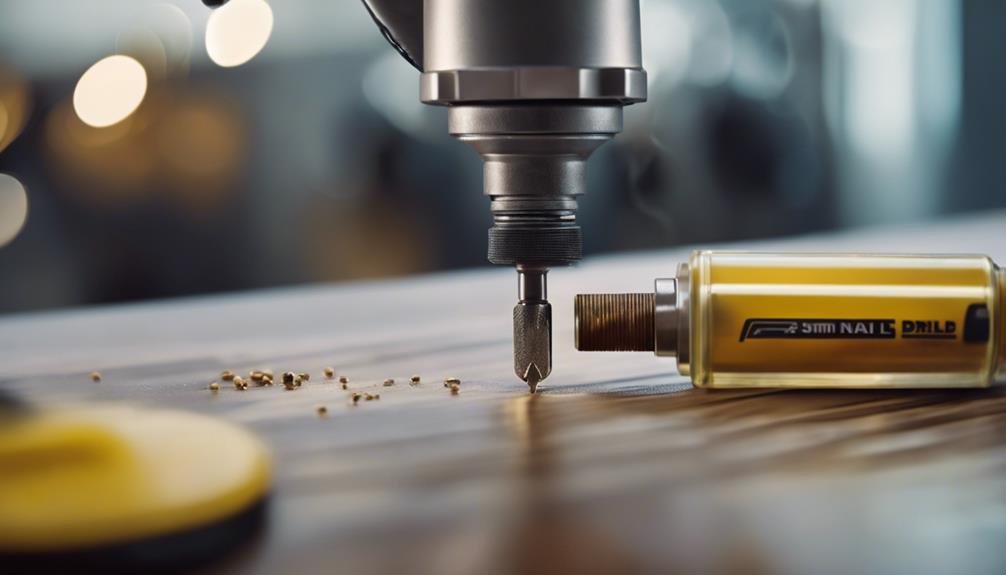
Maintaining your nail drill is essential to ensure its longevity and optimal performance. Regular maintenance not only prolongs the life of your equipment but also enhances its efficiency. Here are some nail drill maintenance tips to keep your tool in top condition:
| Maintenance Tip | Description |
|---|---|
| Clean after each use | Use a brush or cloth to remove dust and debris from the drill head. |
| Lubricate moving parts | Apply a small amount of oil to the bearings and other moving components. |
| Check power source | Ensure the power cord is intact and the voltage is suitable for the drill. |
| Inspect for wear and tear | Regularly check for any signs of damage or deterioration in the drill body. |
| Store properly | Keep the nail drill in a dust-free environment when not in use. |
Expert Recommendations on Nail Drills
For optimal performance and longevity of your nail drill, expert recommendations play a crucial role in guiding users towards effective usage and maintenance practices. Professionals in the nail care industry suggest the following to make the most of your nail drill:
- Regular Cleaning: Clean your nail drill after each use to prevent buildup of dust, debris, or nail particles that can affect its performance.
- Proper Storage: Store your nail drill in a cool, dry place away from direct sunlight to avoid damage from heat or humidity.
- Maintenance Checks: Conduct routine maintenance checks on your nail drill to ensure all parts are functioning correctly and to address any issues promptly.
- Training and Education: Seek training or guidance from experienced professionals to learn the best techniques for using a nail drill safely and effectively.
Mythbusting Nail Drill Misconceptions
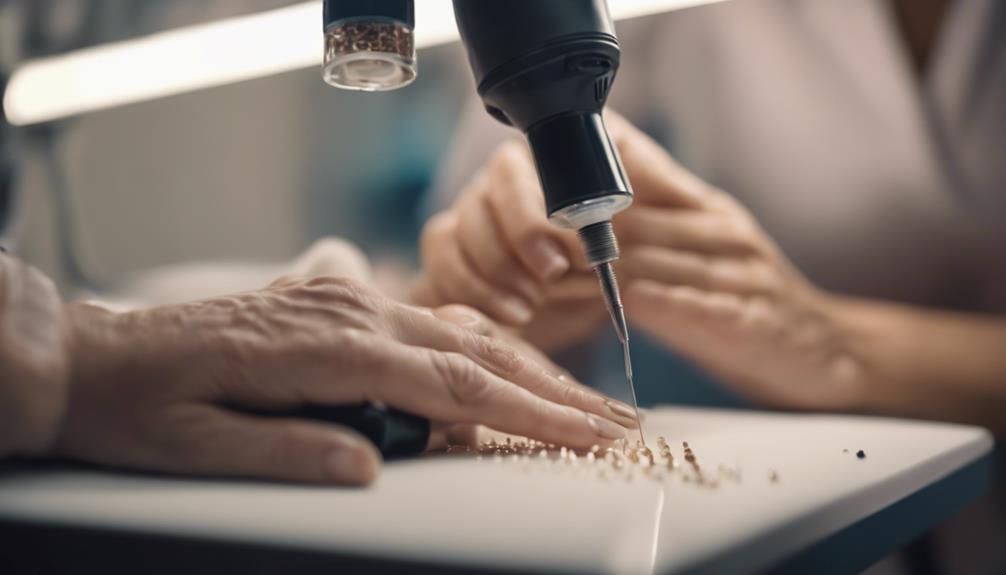
Numerous misconceptions surrounding the use of nail drills persist within the beauty industry, requiring clarification to ensure accurate understanding and informed decision-making. One common myth is that nail drills always cause damage to the natural nail. In reality, when used correctly by trained professionals, nail drills can actually help maintain healthy nails by shaping and smoothing them more precisely than manual tools. Another misconception is that nail drills are only suitable for acrylic nails. While nail drills are commonly used in acrylic nail application and maintenance, they can also be used safely and effectively on natural nails with the right techniques and attachments.
Additionally, there is a belief that nail drills are painful. When used properly and at the right speed, nail drills should not cause pain. They should be used gently to avoid discomfort or damage to the nail bed. Lastly, some may think that nail drills are time-consuming. However, with practice, nail technicians can efficiently use drills to save time while achieving precise and professional results. By debunking these myths, individuals can better understand the benefits and proper usage of nail drills in the beauty industry.
Frequently Asked Questions
Can Nail Drills Cause Damage to the Natural Nail Bed?
Nail drills, if used improperly or excessively, can indeed cause damage to the natural nail bed. It is crucial to follow proper techniques, use the right tools, and seek professional guidance to minimize risks and maintain nail health.
Are There Any Long-Term Effects of Using Nail Drills Regularly?
Regular use of nail drills may lead to thinning of the nail plate, increased risk of nail infections, and potential damage to the surrounding skin. Long-term effects can include weakened nails and sensitivity.
How Do Nail Drills Compare to Traditional Nail Files in Terms of Efficiency?
In terms of efficiency, nail drills offer a quicker and more precise method of shaping and filing nails compared to traditional nail files. Their adjustable speed settings and various attachments provide versatility and convenience in nail care procedures.
Can Nail Drills Be Used on All Types of Nails, Including Acrylic or Gel Nails?
Nail drills, when used correctly, can be versatile tools suitable for various nail types, including acrylic and gel nails. Their precision and speed offer efficiency and convenience, making them popular in modern nail care practices.
Are There Any Precautions to Take When Using Nail Drills on Sensitive or Damaged Nails?
When using nail drills on sensitive or damaged nails, precautionary measures are crucial. Prioritize gentle handling, low-speed settings, and proper training. Consult a professional to assess nail health and recommend suitable treatments to prevent further damage.




